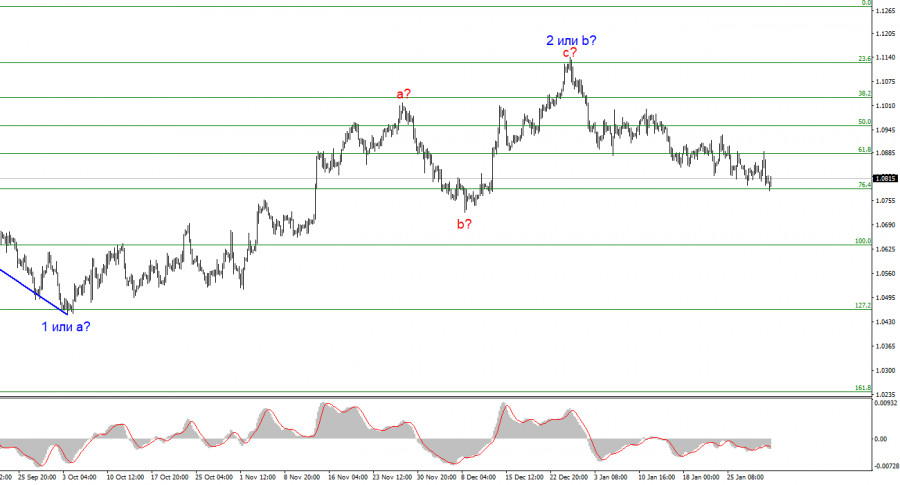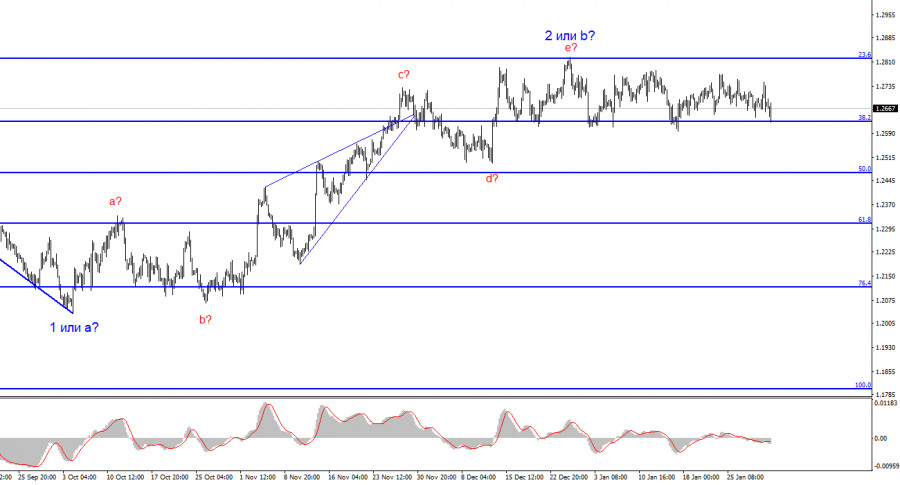

The first meeting of the Bank of England has come to an end. Just like it did with the Federal Reserve, the market was expecting specific statements from the central bank and its governor, but there were no answers to most of the questions. Only a small number of people were seriously expecting BoE Governor Andrew Bailey to step up and announce a rate cut, say in May. Nevertheless, the market needs specific information, not guesses. And it did not get any of those during the central banks' meetings.
The BoE removed from the final statement the phrase that additional tightening of monetary policy may be needed. One of the members of the Monetary Policy Committee even voted for a rate cut. Bailey mentioned the need to maintain a restrictive policy for long enough but not longer than necessary. He said that the period during which the rate will remain unchanged depends on incoming data. The BoE governor believes that it is not yet time to lower rates.

Looking at the situation from Bailey's perspective, he only voiced what he had the right to voice. The market is hungry for information, but Bailey has always been modest in specific details and forecasts. If we set aside all the market's frustration about the lack of specifics, we can say that the meeting went as it should have. Obviously, on February 1, the BoE had no intention of lowering the rate, as it was even considered to raise it at the previous meeting. We learned that the sentiment within the Monetary Policy Committee began to shift towards dovish, and this is already quite important information. Therefore, assuming that inflation continues to fall at a good pace, the decision on the first rate cut may be made in three or four meetings.
Unfortunately, at the time of writing this review, the information provided by the FOMC and BoE was not enough for the pound to make a successful attempt to break through the 1.2627 level. On Thursday, we saw the sixth or seventh attempt to break through (counting simple approaches of the price to this level as attempts). Accordingly, the horizontal movement persists, with all the resulting consequences, and my readers will have to wait for the next attempt. It may happen tomorrow, or it may take a month. We saw that in two months, none of the events have led to success.
Based on the analysis, I conclude that a bearish wave pattern is being formed. Wave 2 or b appears to be complete, so in the near future, I expect an impulsive descending wave 3 or c to form with a significant decline in the instrument. The failed attempt to break through the 1.1125 level, which corresponds to the 23.6% Fibonacci, suggests that the market is prepared to sell a month ago. I will only consider short positions with targets near the level of 1.0462, which corresponds to 127.2% Fibonacci.

The wave pattern for the GBP/USD pair suggests a decline. At this time, I am considering selling the instrument with targets below the 1.2039 mark because wave 2 or b will eventually end, and could do so at any moment. However, since we are currently observing horizontal movement, I wouldn't rush to short positions at this time. I would wait for a successful attempt to break through the 1.2627 level in order to grow more confident about the instrument's decline.